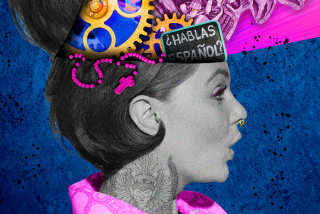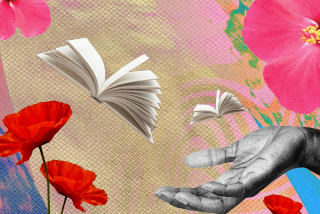The Poet as Cross-Cultural Translator : Mysteries of Pre-Columbian Art Unlock the Clues to a Culture for a Nobel Prize Winner
- Share via
Baudelaire said that poets are the universal translators because they translate the language of the universe--stars, water, trees--into the language of man. Though it was not my goal, in some ways it has been my destiny as a poet to be a translator.
However, I do not think that the act of translation should imply the abandonment of personality or the culture into which we were born. In fact, in many ways I feel that my understanding of modern art is the product of the many years I spent trying to unlock the mysteries of my own culture, of pre-Columbian art.
I worked to see pre-Columbian art through the eyes of a poet rather than through the eyes of archeology or anthropology. I needed to see it from another point of view and then take what I learned from it into the world of modern art. Without the lessons I learned from pre-Columbian art, I could not have understood Cubism, Expressionism or Surrealism. Picasso, for instance, offers thousands of references to primitive art.
Another invaluable lesson came with my discovery of “the other” during my ambassadorship to India in the 1960s. By studying a radically different art and culture, I was able to gain an entirely new perspective on the ancient art of Meso-America.
These discoveries also helped in great measure with my poetry, since contemplation of “the other” is more than just frightening or challenging. It is often exciting and erotic.
My initiation into the art of watching began during my childhood, in a village which was then one hour by train from Mexico City.
One day, while on a picnic with my friends, we found a small pyramid. We ran home through streets lined with 17th-Century convents and 19th-Century buildings to tell our parents of our amazing discovery. This was the Mexico of my childhood, a Mexico rich in pre-Columbian art, the art of the Colonialists, and the flowering of modern Mexican art.
Of the three, pre-Columbian art was the most enigmatic to me, the most difficult to translate. It was only later that I learned to penetrate and appreciate the mysteries of pre-Columbian art.
Meso-America was separated from the rest of mankind for thousands of years. Because of this, its art forms, social organization, cosmological conception and ethics were original: It began and ended with itself.
Pre-Columbian art is a perfect example of this originality: It is an amazing fusion between the literal and the symbolic, the material and the idea, natural and supernatural. But isolation does not foster beauty and originality alone. I also believe that the isolation of Meso-America became the seed of its destruction. When the Indians had to face “the other”--the Spanish--they were technologically and socially unprepared. They confused their enemy with demigods.
This invasion was the beginning of plurality in the Americas, the beginning of a history in which the people ceased to be one. But in nearly all societies, there is a similar story.
Indeed, the first story, that of Babel, explains the shattering of the original unity into a multitude of languages and dialects. Babel is the Hebrew version of Babylon, and the condemnation of that city, probably the first cosmopolitan city in history, is the condemnation of cosmopolitanism, of a plural and pluralist society that acknowledges the existence of “the other” and of others.
But the Babelian malediction is in some ways the Babelian benediction. Plurality of cultures means history, war and domination, but it also means communication and translation, a reconciliation of languages, a reunion of “the other” and others in the unity of understanding.
The effort to speak a foreign tongue, understand it, and translate it into one’s own is to restore the unity of the beginning. And in today’s plural world it is the challenge all of us must face.
More to Read
The biggest entertainment stories
Get our big stories about Hollywood, film, television, music, arts, culture and more right in your inbox as soon as they publish.
You may occasionally receive promotional content from the Los Angeles Times.










